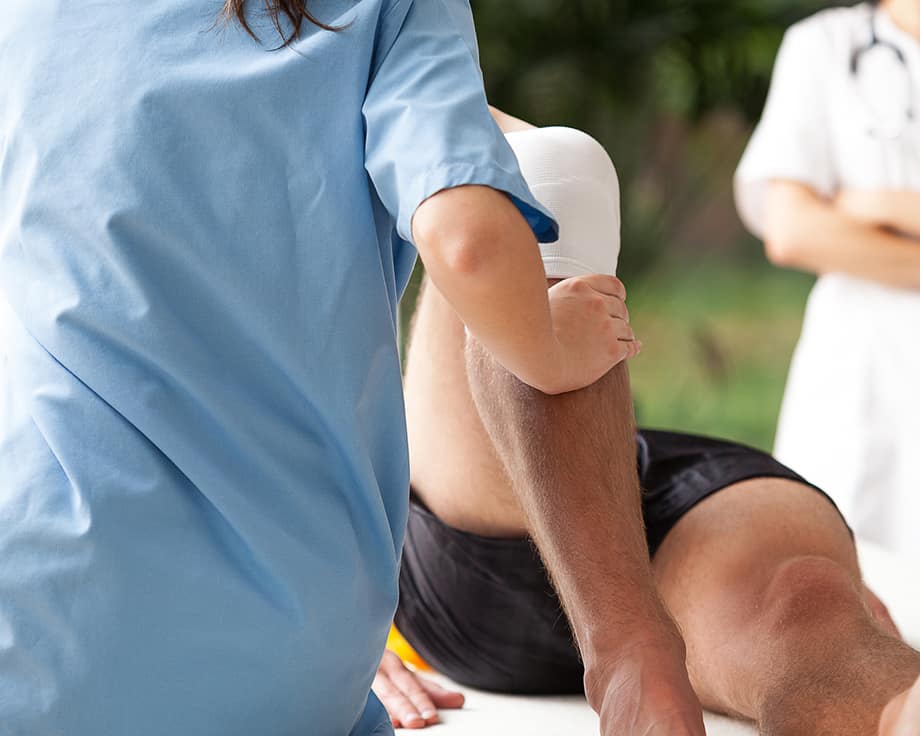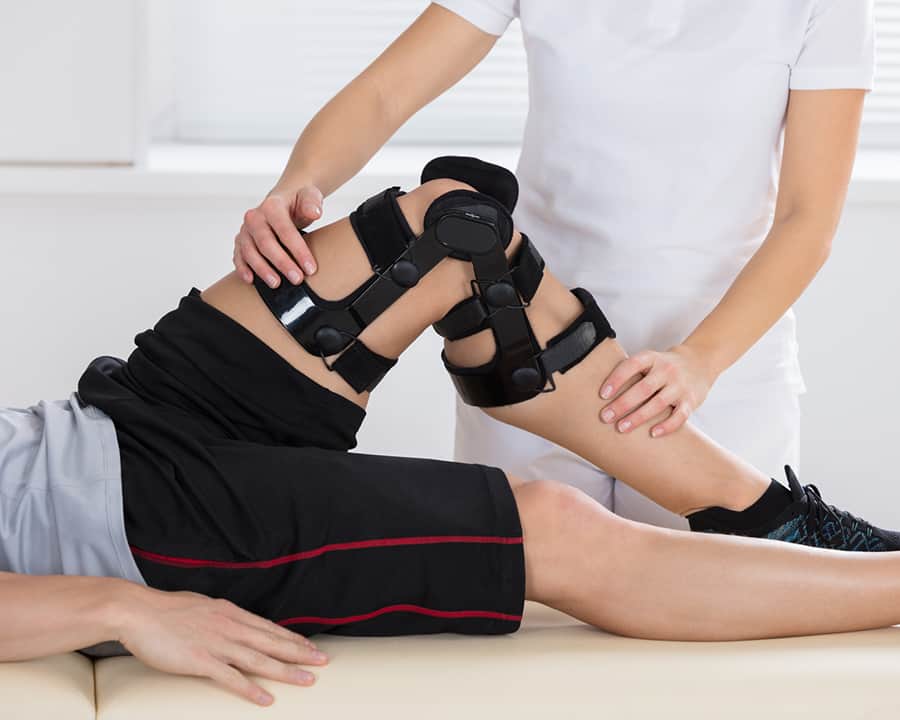 Knee replacement rehab and recovery is an important part of replacement surgery. If you or a loved one are facing the prospect of knee replacement surgery, you probably have lots of questions about what your recovery and rehabilitation process will look like. Knee replacement surgery is a big procedure that requires careful care and attention during the recovery process. But perhaps the most important part of the process (don’t tell your surgeon) is the physical therapy and rehab strategy that follows. Physical therapy helps to accelerate the healing process and make your post-surgery life much more comfortable. It can be a real game-changer after a knee replacement.
Knee replacement rehab and recovery is an important part of replacement surgery. If you or a loved one are facing the prospect of knee replacement surgery, you probably have lots of questions about what your recovery and rehabilitation process will look like. Knee replacement surgery is a big procedure that requires careful care and attention during the recovery process. But perhaps the most important part of the process (don’t tell your surgeon) is the physical therapy and rehab strategy that follows. Physical therapy helps to accelerate the healing process and make your post-surgery life much more comfortable. It can be a real game-changer after a knee replacement.
Knee replacement rehab can take some time and effort. Often, the recovery period can be just as difficult as the procedure itself. Pain, inflammation, and discomfort are common after surgery. But we create a personalized rehab program tailored to your needs and goals. Together, we work to improve your knee strength, balance, and overall functionality. There are several knee replacement rehab methods we use to enhance and speed up your recovery process. By committing to the post-surgery rehabilitation routines and practices we teach you, you can regain your strength and mobility and improve your post-surgery health.
More Blogs from ProActive Physical Therapy
Low Back Pain During Pregnancy
The Importance of Running Warmup Exercises – Part 1
Driving Smart To Avoid Neck Pain
Effective Exercises for Knee Replacement Rehab
In the initial stages of recovery, the focus is on gentle movements and controlled exercises. Ankle pumps and circles prove beneficial in improving blood circulation, while quadriceps sets are instrumental in activating and strengthening the thigh muscles. Additionally, straight leg raises help enhance knee extension, laying the foundation for more intensive exercises in the subsequent stages.
As the recovery progresses, there is a gradual increase in exercise intensity. Heel slides become crucial in improving knee flexion, and seated leg presses with resistance aid in muscle strengthening. Stationary bike exercises provide a controlled environment for joint movement, promoting flexibility and strength in the recovering knee.
Recovery in the Later Stages
Beyond the initial weeks, the focus shifts to advanced exercises to continue progress and foster muscle development. Leg curls target the hamstrings, step-ups enhance balance and stability, and standing calf raises contribute to overall lower limb strength. These exercises collectively contribute to restoring the knee’s functionality and resilience.
Maintaining and improving joint flexibility is paramount in the rehabilitation process. Incorporating knee flexion and extension stretches is essential to prevent stiffness. Gentle practices such as yoga or tai chi contribute not only to flexibility but also to overall balance and coordination.
Water-based exercises offer a unique advantage in knee replacement rehab due to reduced impact. Activities like walking in the pool and leg lifts in water provide resistance without exerting excessive stress on the joints. Aqua therapy proves particularly beneficial for those looking to combine the benefits of exercise with a lower risk of injury.
 Tips for Safe and Effective Exercises
Tips for Safe and Effective Exercises
Before embarking on any exercise regimen, it is crucial to consult with a physical therapist for guidance on your knee replacement rehab process. Starting with low-impact exercises and gradually progressing helps the body adapt to the increased demands. Paying attention to any pain or discomfort during exercises is essential, and modifications should be made accordingly. Incorporating proper warm-up and cool-down routines further ensures a safe and effective rehabilitation process.
While exercise is vital for recovery, it is equally important to be aware of potential complications or risks. Regular communication with healthcare professionals is encouraged, and individuals should remain vigilant for signs of infection or issues that require immediate attention. A collaborative approach between the individual and their healthcare team is key to a successful rehabilitation journey.
In conclusion, a well-structured exercise routine is paramount in restoring mobility and function after knee replacement surgery. Consistency and patience are crucial, and individuals should recognize that each stage of rehabilitation plays a vital role in the overall recovery process. By adhering to a tailored exercise plan and staying in close contact with healthcare professionals, individuals can embark on a successful road to recovery post knee replacement surgery.



